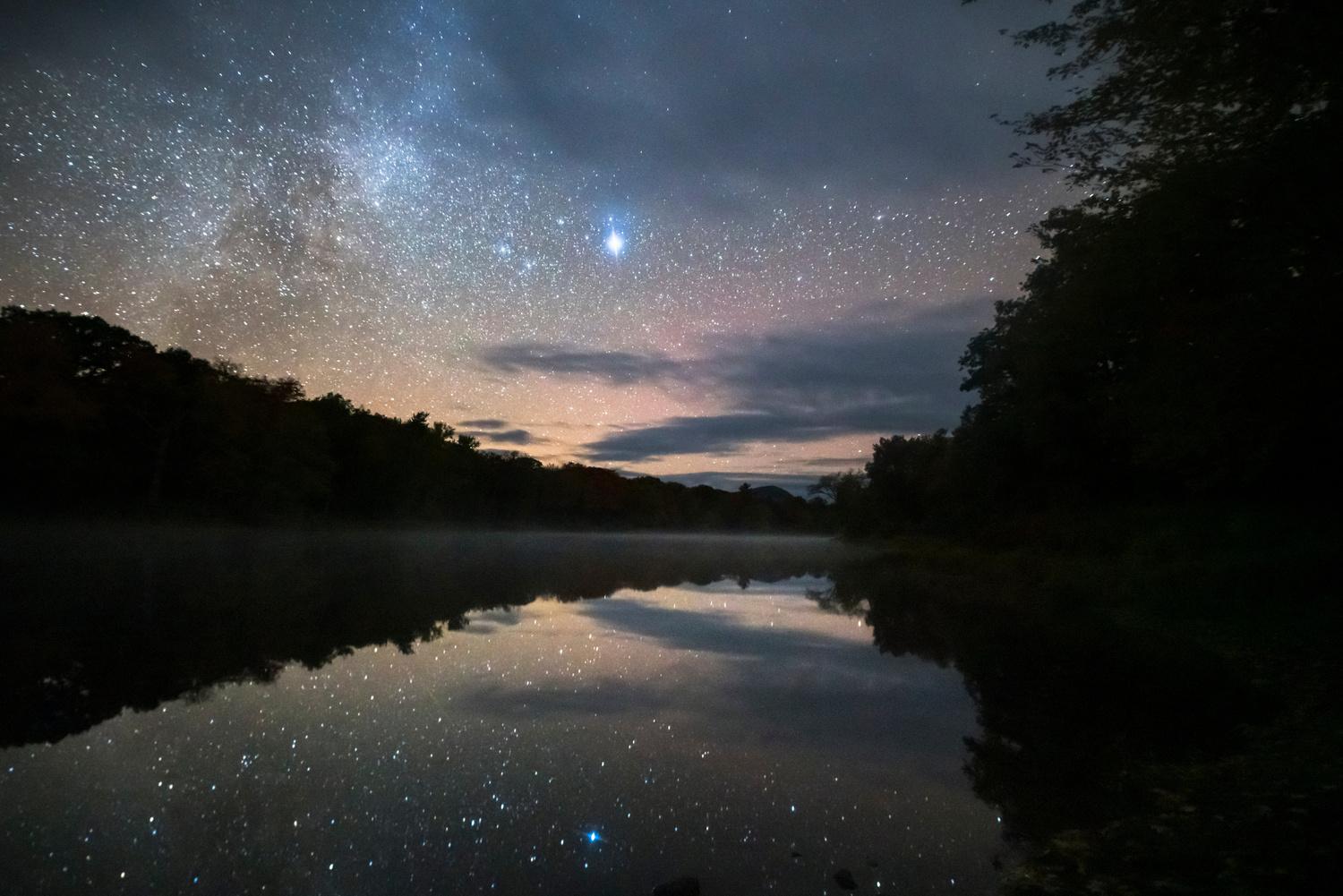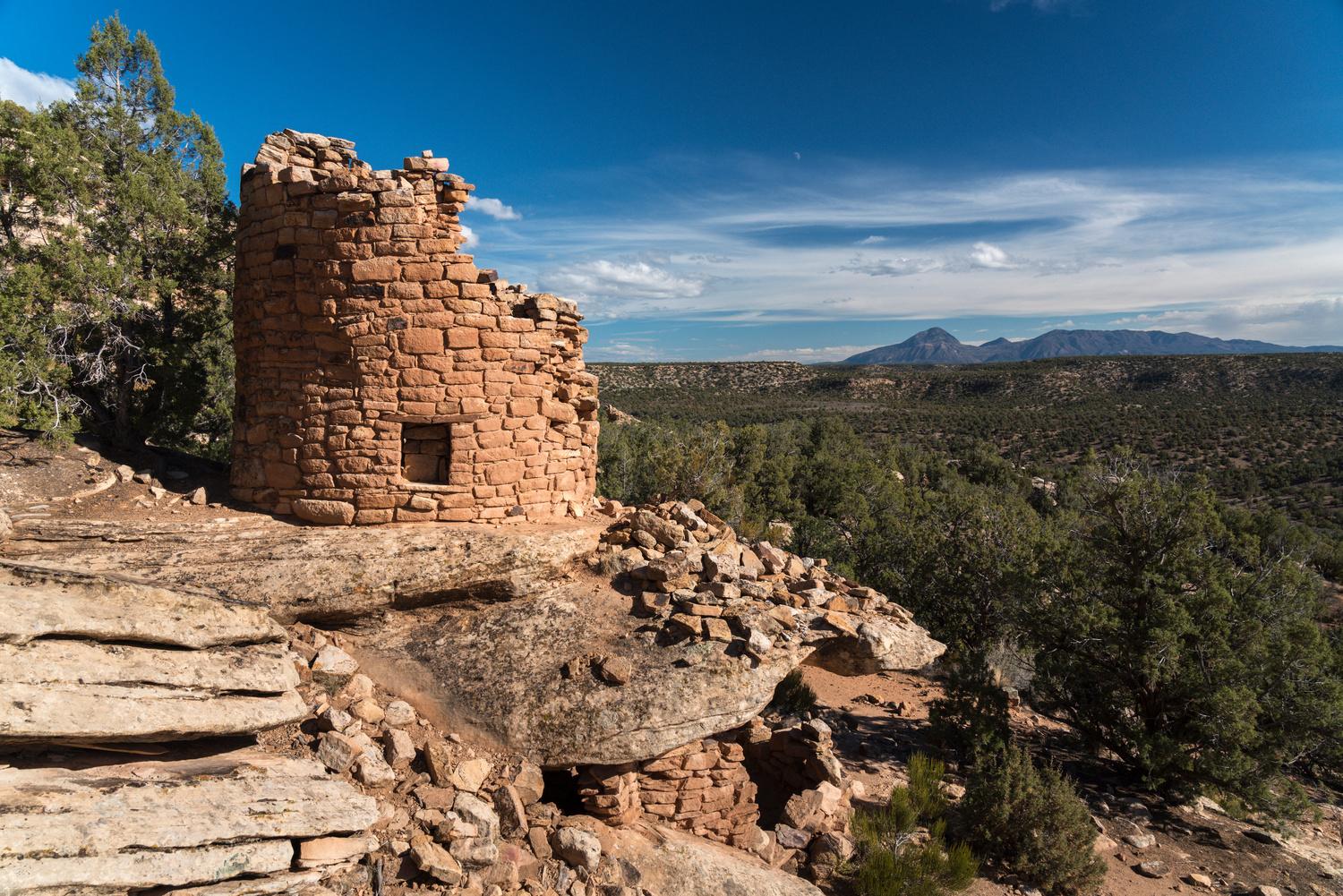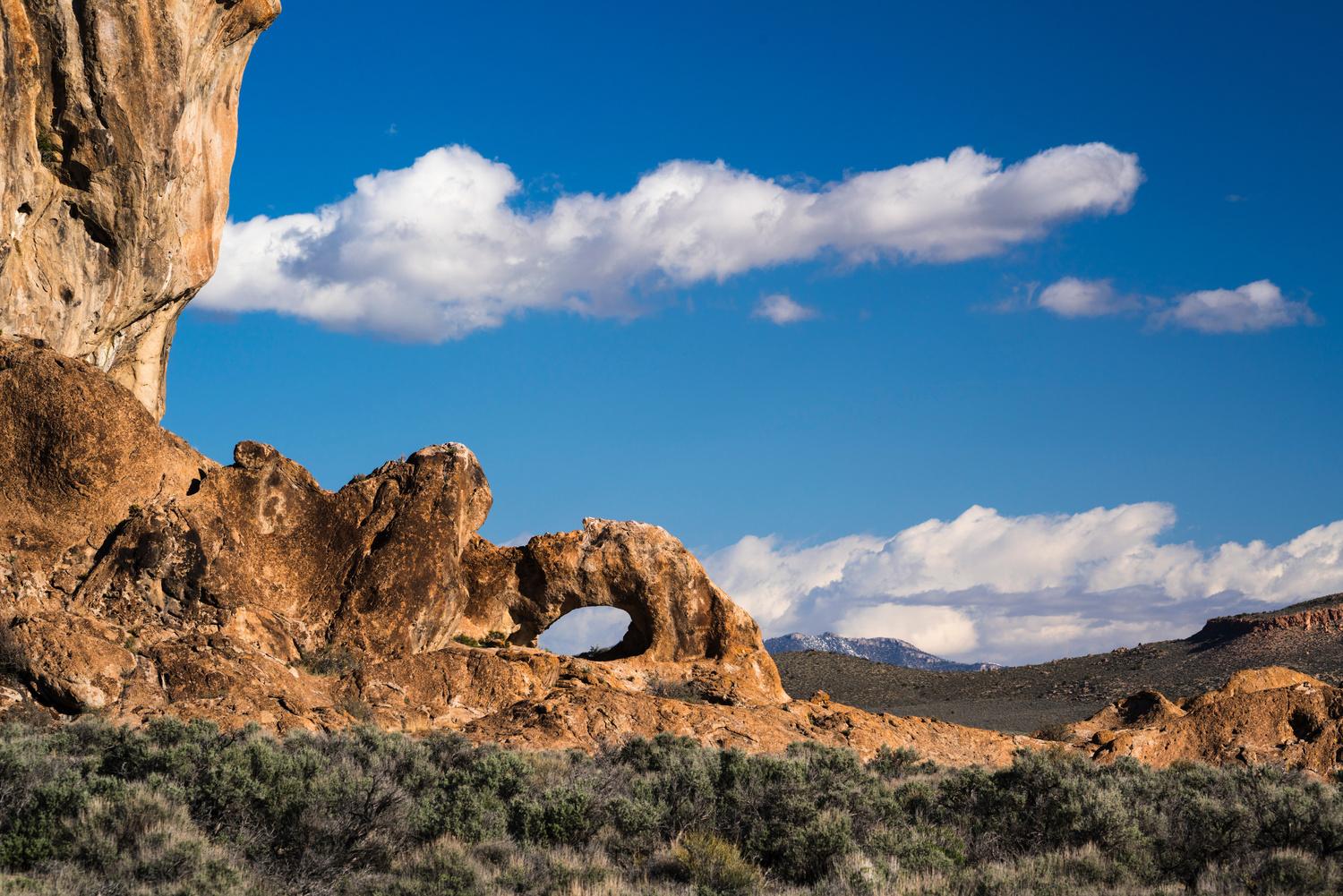
East Branch of the Penobscot River after dark in Katahdin Woods and Waters National Monument/QT Luong
Our National Monuments, A Photographic Testimonial To Wild America
By Kurt Repanshek
Across the United States there are gems hidden, and some not so hidden, reflecting the richness of America's landscape that remains more than two centuries past the birth of the country. At a time when sprawl is pressing more and more across many states and natural areas, these places protected as a collection of national monuments capture the imagination of a time and a wild America many no doubt thought was long past.
Within this assemblage there are places that offer a pathway into nature, where asphalt and cement have not intruded, nor have many roads. They are lands where you can spend a day or a month marveling, or puzzling, over nature and its wonders. The twists of geology, the course of a stream, the contortion of a saguaro branch, the harshness of desert.
QT Luong has captured with his cameras the personalities of these landscapes in a new book -- Our National Monuments | America's Hidden Gems -- that offers proof that while the National Park System is woefully crowded in some corners, there remain lands, and waters, to roam without masses of humanity around every corner. That they are not dubbed "national parks" is a benefit, not a slight, for that likely would bring the crowds that are choking some of the parks.
In her forward to this sweeping photographic collection of more than two dozen national monuments stretching from the deep waters of the Atlantic Ocean off the coast of Rhode Island to the Pacific waters north of Hawaii, former Interior Secretary Sally Jewell notes that the acres protected within these monuments are crucial for nature's biodiversity as well as for the preservation of cultural identity, such as that housed in the Bears Ears National Monument.
"Humanity is awakening to the importance of intact lands, waters, and ecosystems to our health and well-being, and the stresses we have placed on them through our actions," wrote Jewell.
Luong, who reached out to photographer and filmmaker Ian Shive to provide images of marine monuments, is not a newcomer to such landscapes. He is one of the most accomplished, and well-traveled, of today's national park photographers. In 2002 he became the first large-format photographer to capture all 58 "national parks" that were counted at the time, and was included in Ken Burns and Dayton Duncan's 2009 documentary on the parks, The National Parks: America's Best Idea, because of that feat.

Canyons of the Ancients National Monument was designated by President George W. Bush in 2000/QT Luong
The idea to embark on a new odyssey, this time to capture a small slice of the nearly 130 areas today listed as national monuments across the country, was spurred by former President Donald Trump's decision to break up and reduce the size of Grand Staircase-Escalante and Bears Ears national monuments in 2017.
"The actions of Trump in December 2017 prompted me to visit and photograph the 22 land national monuments. I realized how beautiful and how little known they were," Luong said in an email this past week. "I wish to inspire readers to discover, visit, love, and protect those beautiful and critically important public lands. I also hoped the book could help conservation organizations raise awareness of those lands (Leaders of the Conservation Lands Foundation, the umbrella organization for many community-based advocates participating in the book, have confirmed how useful Our National Monuments will be for their efforts)."
The book, which contains more than 300 photos, separates the monuments into "chapters": Maine (Katahdin Woods and Waters NM), Montana (Upper Missouri River Breaks NM), Washington (Hanford Reach NM), Idaho (Craters of the Moon NM and Preserve), Oregon (Cascade-Siskiyou NM), California (Berryessa Snow Mountain NM, Giant Sequoia NM, Carrizo Plain NM, San Gabriel Mountains NM, Sand to Snow NM, and Mojave Trails NM), Nevada (Basin and Range NM and Gold Butte NM), Utah (Bears Ears and Grand Staircase-Escalante NM), Colorado (Canyons of the Ancients NM), Arizona (Vermilion Cliffs, Grand Canyon-Parashant, Sonoran Desert and Ironwood Forest NMs), New Mexico (Rio Grande del Norte NM and Organ Mountains-Desert Peaks NM), and the Marine monuments (Papahānaumokuākea, Pacific Remote Islands, Rose Atoll, Marina Trench, and Northeast Canyons and Seamounts NMs).
In support of these places, the photographer in most cases reached out to nonprofit friends groups organized around each monument to provide a page-long introduction for each chapter.
The landscapes protected by the national monuments Luong visited over the course of many years dating back to the 1990s are poignant vignettes, waning visages of the wildness that once stretched between the two coasts. For the bulk of America that has no knowledge of these places beyond, perhaps, their names, he has quite literally affixed places to the names, using both his large format camera as well as various Sony AR7 series digital cameras with lenses from 16mm to 400mm. For those inspired to visit these places after paging through the hefty, 308-page hardcover book, Luong provides travel notes he made while on the road tied to the specific locations appearing in the photographs.
As most of the East was settled long before the concept of a national monument was imagined, Luong's focus mostly was drawn to the West. Maine, though, is an exception, where he caught the hardwoods personality of Katahdin Woods and Waters National Monument with its rocky streams coursing with water the gradient has stirred into a froth, as well as placid ponds and lakes mirroring the fall colors dappling the surrounding forests.
In New Mexico, Rio Grande Del Norte National Monument practically leaps from the pages with expansive panoramas cut by rivers in some places, and pushed skyward by dormant volcanoes in others. Organ Mountains Desert Peaks National Monument is a blend of Chihuahuan Desert and ponderosa pine mountainsides that climb to 9,000 feet above sea level.
Luong loaded his gear into a tandem kayak to tackle the Upper Missouri River Breaks National Monument in Montana. "Being more used to kayaks, I rented a double kayak," he said in notes on the chapter. "It had enough room for my full-size photo backpack and my drone backpack, in addition to camping gear, food, and water."
He came home with images that captured both the gruelling landscape Lewis and Clark negotiated during their three-year-long journey from the western outpost at the time, of St. Louis, to the Pacific Coast in present-day Oregon, and the pastoral setting that begs you to dip a paddle in the Missouri River and spend a handful of days exploring it while trying to imagine the hardships the Corps of Discovery had more than two centuries ago.
Shive, an acclaimed photographer in his own right, provided images and supporting text from the marine national monuments of Papahānaumokuākea, Pacific Remote Islands, and Rose Atoll, while the National Oceanic and Atmospheric Administration provided photos of Mariana Trench and Northeast Canyons and Seamounts, the last being the only other East Coast representative in the book.
The bulk of the book's photographs were accumulated from January 2018 to March 2021, when Luong spent more than four months on the road. But some of the monuments, such as Grand Staircase-Escalante in Utah, were visited in the 1990s as it was being designated by Clinton. Seasons often dictated his visits, either because he wanted to visit at a specific time of year, or because the weather dictated when he could visit.
"With the exception of three quite distant for me (Katahdin Woods and Waters, Upper Missouri River Breaks, Canyons of the Ancients), I visited each at least two times, and some up to six times," he says. Perhaps the most difficult monument to visit was Grand Canyon Parashant.
"Just to enter the monument, you already drove two hours on a dirt road, and the farther you go (into some of the most remote locations in the continental U.S.) the more difficult they get, to the point that stock SUVs are not sufficient," Luong said. "The Upper Missouri River Breaks is unusual in that to really see it, you need a multi-day float, but it's not tough to do."

Coal Valley Natural Arch in Basin and Range National Monument in Nevada/QT Luong
Not all national monuments were so difficult to reach, or solitary places. At San Gabriel Mountains National Monument in California, the photogrpaher found "visitation is comparable to some high-profile national parks, but that was only on the well-known trails."
"There were a few popular spots in some of the other monuments, especially on weekends," Luong added. "The only time I really noticed it was on Pilot Rock in Cascade-Siskiyou, because you have to wait your turn on narrow passages, but it never rose to the level of 'crowds.' To be more precise, I looked at the 137 locations described in the book: 34 percent I didn't see anybody else, 55 percent just a few people, 9 percent many people."
Though only 27 national monuments are represented in this book, Luong's powerful images of them well defend, and even underscore, the need to protect more landscapes across America, not just to protect them from being overrun or otherwise spoiled, but as a measure of protection to cope with climate change and the global loss of biodiversity.
"They must not become political fodder in a divided nation, changing with each new presidential administration," the photographer reminds us in an afterword. Trump's upheaval of The Antiquities Act with his move to disassemble Bears Ears and Grand Staircase national monuments, which President Joe Biden reversed, "also reminded us of John Muir's appeal that 'the battle for conservation will go on endlessly.' We can no longer take designations for granted."
To learn a little bit more about the book, and place an order, visit Luong's page.

 Support Essential Coverage of Essential Places
Support Essential Coverage of Essential Places
Comments
Fortunately I own both books - one signed. I not only am able to enjoy them, but so are visiting guests. I have been able to visit and enjoy most of the National Parks, but am woefully lacking on the National Monuments. I do have a lttile different take on adding to the National Parks and Monuments, but it's only a result of the huge financial shortfall on maintaining existing properties. Also, by far, Utah is predominately Federal property and scaling back ownership made sense to me. I also think more States should step up protecting the property if that is the will of the people. Unfortunately I believe States view protecting land much like individuals review mass transit - great as long as it isn't in my backyard!
Many of the National Monuments mentioned in the article are not part of the National Park System. They are administered by the Forest Service, the Bureau of Land Management aka BLM, and a few other agencies. Some National Monuments are part of the National Park System. The levels of protection and management policies are different per the various agencies.